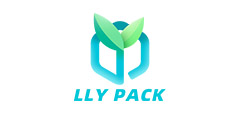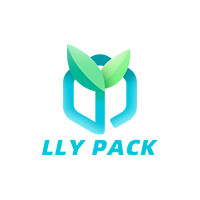Corrugated board flatness is one of the important indicators in the carton production technology. It is directly related to the quality of product printing, die cutting or notching. The poor flatness of corrugated board will result in a variety of arched shapes of corrugated paperboard, and it will be easily jammed when the mechanical printing and printing is carried out and cause the paperboard to be scrapped and be forced to shut down and clean up. Ink printing is not uniform and the color registration is not easy in double-color printing or multi-color printing. Quasi-colored, overlapping edges appearing voids, etc.; slotted size displacement of the boot press, overlapping or unsmoothing of the cartons from top to bottom; die-cutting feeds can also cause problems such as jamming and dimensional displacement, both of which may lead to positive waste paperboard waste, or The equipment was damaged and forced to shut down. In short, the poor flatness of the paperboard will cause inconvenience in feeding and increase the number of waste products in the production process.
In order to improve the flatness of corrugated products, ensure the qualified rate of product quality and normal production efficiency, we constantly tested and analyzed the practice of carton production and found some improvement methods. The rough outline is as follows, for reference only.
Corrugated paper sheet poor appearance appearance shape
Corrugated cardboard poor appearance of the shape of the Corrugated Carton Machine general can be divided into three types: horizontal arch, longitudinal arch and arbitrary arch.
Lateral arching refers to the arching that occurs along the corrugated direction. Longitudinal arching refers to the arched shape of the board along the line speed of the production line. Arbitrary arches mean undulating arches in any direction. The surface of the dough paper is arched in the form of a positive arch, the arched surface of the paper is called a negative arch, and the surface of the paper has undulations called positive and negative arches.
The main reasons affecting the flatness of the board
1, the surface of paper types, different levels. There are imported, domestic kraft paper, imitation kraft paper, corrugated paper, tea board paper, high-strength corrugated paper, etc., and points A, B, C, D, E, grade. According to the paper quality material, the general paper is better than the paper.
2. The main technical parameters of the paper in the surface are different. Considering the performance requirements of the carton or the user to reduce the cost, the paper inside the carton is required to be different, usually:
(1) The amount of paper in the dough is different. There is a large amount of face paper than the paper, and there are also small ones.
(2) The moisture content of the paper in the facial tissue is different. Due to the different environmental humidity of suppliers, transportation stocks, and the fact that there is a large moisture content in the facial tissue, it is also small.
(3) The amount of paper and moisture content in the surface are all different. One is that the dough paper is greater than the paper, and the water content is greater than the paper or less than the paper. The second is that the surface paper is less than the paper, the moisture content is Corrugated Box Machine greater than the paper or less than the paper.
3, the same batch of paper moisture content is different. Part of the paper moisture content is greater than the other part of the paper or paper between the ends, the outer edge side and the inner core side of the water content is different.
4. The length of the heating surface of the paper (wrapping angle) is improperly selected and adjusted, or the length of the heating surface (wrapping angle) cannot be arbitrarily adjusted. The former due to improper operation, the latter due to equipment limitations, affecting the preheating drying effect.
5. The steam spray device cannot be used correctly or there is no spray device on the device, so the humidity of the paper cannot be arbitrarily increased.
6. After the paper is warmed up, the water is not distributed in sufficient time or the ambient humidity is high, the ventilation is poor, and the speed of the production line is improper.
7. Unilateral corrugating machines, gluing machines have improper sizing, uneven feeding, and uneven cardboard shrinkage.
8, steam pressure is not enough, instability, steam traps and other accessories damaged or drained water does not lead to the preheater can not work properly.
Related factors, parametric testing and qualitative analysis
For the problem of how to improve the flatness of the paperboard, we tested and analyzed the physical properties, process equipment, and other related factors and parameters of several commonly used papers.
(1) The quantitative increase of the same type of paper, the shrinkage rate is slightly reduced. The relationship among the imported kraft paper, domestic beef (imitation) leather paper, tea board paper, high-strength corrugated paper, the quantitative, moisture content, shrinkage ratio.
(2) The steam pressure supplied by the corrugated board production line is directly proportional to the surface temperature of the preheater. The higher the pressure. The higher the surface temperature of the preheater.
(3) The paper with high moisture content is quantified, preheated and dried slowly, and vice versa. Papers with different basis weight and moisture content are preheated and dried on a preheater with air pressure of 1.0Mpa/cm2 (172°C).
(4) The greater the length of the heating surface (wrapping angle) when the paper is dried on the preheater, the lower the water content. The relationship between the length of the heating surface and the moisture content after baking was determined at a preheater temperature of 172°C and a line speed of 0.83 m/s for papers of different basis weights with a moisture content of 10%.
(5) After the single-faced corrugated paper is warmed up, it naturally emits water slowly, and the fans are ventilated back to powder quickly. Quantitatively, the moisture content of 220g/m2 and 150g/m2 single-faced corrugated paper after preheating at 172°C is 13%, and the natural distribution of moisture in the greenhouse at 20°C and humidity 65% is compared with the speed of fan ventilation.
Qualitative analysis
The above test results show that the paper, the quantitative, and the moisture content are different, and its shrinkage is also different. This is an important physical property of the paper. With the same paper material in the surface, the cardboard can easily achieve a good flatness. On the contrary, it is difficult. To comprehensively consider the changes of the above five major factors, make appropriate adjustments. The goodness of flatness depends on the shrinkage of each layer of the paper. To make the paperboard have a better flatness, the shrinkage of the paper must be basically the same, and the most important one is the paper in the surface. The shrinkage of the tissue paper is smaller than that of the paper and it is a negative arch. On the other hand, the local unevenness of the paper shrinkage becomes positive and negative arch. From the analysis of the process of board formation in the production line, the control shrinkage rate can be divided into two stages.
(1) The formation of corrugations. This is the key step for controlling the shrinkage rate, which is the various processes before feeding the raw paper to the secondary coating. According to the actual conditions of the paper, steam pressure, ambient temperature and humidity in each layer of the tile, adjust the preheating temperature, the length of the heated surface (wrapping angle), the method of ventilating water distribution, the steam spray, and the amount of glue respectively. The technical parameters of the speed lamp of the production line are such that each layer of paper is controlled by suitable and effective processes, each of which is free to shrink, and the final shrinkage rate is basically the same.
(2) The cardboard forming stage. It is the bonding, drying and ironing of the secondary coating to the subsequent process. At this point, each layer of paper has not been able to shrink freely. After being glued into cardboard, the shrinkage of each layer of paper is restricted by each other. The bonding point can be said to be the starting point of cardboard arching. To select and adjust the technical parameters such as the amount of glue, the temperature of the baking board, and the speed of the production line,Corrugated Cardboard Machine control the difference in shrinkage ratio to the minimum, and iron the arches generated by the cardboard as much as possible.
Cardboard flatness improvement method
Improvement of the flatness of corrugated board:
First, the base paper provided by the supplier is required to have a qualified and stable basis weight and moisture content. During transportation and loading and unloading, rain is prevented from getting wet. The basic environmental humidity is maintained during storage in the factory.
The second is that the surface of the paper choice of materials as much as possible using the same type of paper or quantitative, moisture content, the same grade of paper.
Thirdly, the paper with high water content is heated by the heating surface (wrapping angle) of the preheater, and is ventilated by the electric fan to increase the time for distributing water and slow down the speed of the production line. Paper with a small moisture content passes through the preheater ) The length of the heating surface is reduced, natural ventilation and steam spray are used to speed up the production line.
Fourth, the amount of glue on each layer of paper remains the same, and the amount of glue on the entire width of the paper along the direction of the corrugation is even and moderate.
Fifth, pressure stability, traps and other pipe fittings to maintain normal function.
There are many factors that affect the flatness of corrugated board, and the changes between the various factors of flatness will change. Improvements must be made according to local conditions and targeted, and the main contradiction must be resolved. Here are some examples of common problems in the production of single and double corrugated cardboard in our factory.
Cardboard is arched horizontally
Known: face paper is 250g/m2A grade kraft paper, moisture content of 7.7%; (clamp) tile paper is 150g/m2 domestic high-strength corrugated paper, moisture content of 10%; inside paper is 250g/m2B grade kraft paper moisture content of 14%; 1.1Mpa/cm2 production line speed 60m/min. ways to improve:
(1) The length of the heated surface of the (jaw) tile through the preheater (wrap angle) is increased by 1 to 1.6 times and 0.5 to 1.1 times, respectively.
(2) The medium-speed ventilation of the 0.9KW electric fan is adopted for the inner (clamp) tile line moving on the bridge of the production line, and the workshop is opened for natural ventilation.
(3) The face paper is evenly sprayed with a small amount of steam.
(4) The production line speed is reduced to about 50m/min.
Adjusted according to the above-mentioned selection parameters, the original transverse arch can disappear.
Cardboard is negatively arched from vertical
ways to improve:
(1) Face paper increases the resistance before the three-layer preheater, and increases the rotational force of the tube paper.
(2) The guide wheels and tensioning wheels of the Liwa paper in front of the three-layer preheater reduce the movement resistance.
Appropriate adjustment of the original longitudinal arch can disappear.
Cardboard is negatively arched horizontally
Known: face paper is 200g/m2B imitation kraft paper, moisture content of 8%; air pressure 1.0Mpa/cm2; production line speed 50m/min. ways to improve:
(1) The length of the heating surface of the surface (clamp) tiles through the preheater is increased by 0.9 to 1.4, 0.6 to 1.12 times, respectively.
(2) The paper reduces the length of the preheater heating surface or sprays it with steam.
(3) The production line speed increased to about 60m/min.
Cardboard is arched vertically
ways to improve:
(1) Face paper reduces movement resistance in front of the three-layer preheater and reduces the rotational force of the tube paper.
(2) Liva paper increases the resistance of the guide wheel and the tensioning wheel in front of the three-layer preheater. Appropriate adjustment of the original longitudinal arch can disappear.
Cardboard is negatively arched horizontally
Known: face paper is 200g/m2B grade kraft paper, moisture content of 13%; (clamp) tile paper is 150g/m2 high-strength corrugated paper, moisture content of 10%; paper with 200g/m2B grade imitation kraft paper, moisture content of 8%; Air pressure 1.0Mpa/cm2; production line speed 50m/min. ways to improve:
(1) The length of the heating surface of the surface (clamp) tile through the preheater is increased by 0.9 to 1.4, 0.6 to 1.1 times, respectively.
(2) The paper reduces the length of the preheater heating surface or sprays it with steam.
(3) The production line speed increased to about 60m/min.
Cardboard is arched vertically
ways to improve:
(1) Face paper reduces movement resistance in front of the three-layer preheater and reduces the rotational force of the tube paper.
(2) The tension in the tension of the Riva line in front of the three-layer preheater increases the resistance to movement.
Cardboard is positive and negative arched
Since there are two types of positive and negative arches, and the methods for improvement are different, only the common transverse positive and negative arches are described here.













